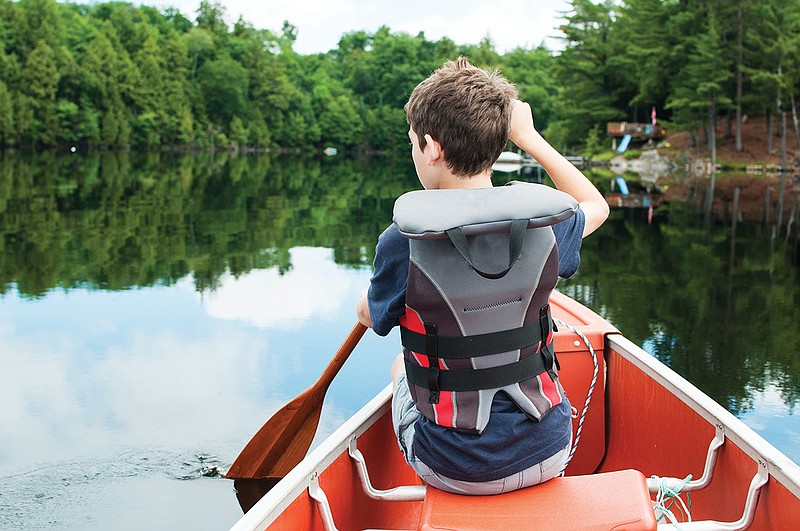When introducing children to paddling, the younger, the better, says Zach Bopp, supervisor of experiences at Chattanooga's REI.
"You want it to become second nature to them," he says.
Since 2018, Bopp has been helping lead experiences with REI: local kayak tours, learn-to-kayak classes and beginner overnight and backpacking classes. Though REI has temporarily canceled all its in-person experiences due to COVID-19, Bopp says he expects some of its programs (ones that allow for proper social distancing, of course) to return soon.
Afer all, according to experts, the outdoors may be one of the safest spots amid the pandemic - especially when it involves sun, water and a basic understanding of safety.
Here, Bopp offers a few quick lessons on how to introduce your children to the sport of paddling.
Step 1: Get the right life jacket, also known as a personal flotation device or PFD.
Every paddler, regardless of age or experience, needs to have one, says Bopp.
"They make tiny little [PFDs], ones that go down to 25 pounds," he says.
For optimal safety, PFDs should be labeled type III, which are specially designed for an activity like paddling. Moreover, they should be labeled U.S. Coast Guard Approved.
"And make sure you're wearing it properly," Bopp emphasizes.
REI offers personalized in-store fittings, as well as virtual fittings which allow you to book an online video conference with an expert to help answer any gear-related questions you have.
Step 2: Develop your own skill set first.
"If a parent is already comfortable on the water, it's so much better than them trying to learn and teach their kids at the same time," Bopp says.
In addition to REI's learn-to-kayak classes, Outdoor Chattanooga offers Paddle Smart, an introduction to flatwater. Visit their websites to check for class availability.
Step 3: Introduce your child to the boat, but don't plan on paddling.
The first time you put your boat and your children on the water, don't paddle, says Bopp. "Just let them play with it. Have them treat [the boat] like a pool toy."
He recommends the Chickamauga Dam recreation area as an ideal spot for first-timers. "There's a wonderful sandy beach, no current, and convenient parking so you don't have to carry your boat far."
Plus, there is no fee to park or play.
Step 4: Plan a short trip.
"Get a taste of the movement of the boat, but plan a trip that's under an hour," says Bopp. "Kids are going to wear out way quicker than adults."
A great beginner destination, he says, is Nickajack Cave, famous for its endangered gray bat population which emerges en masse from the cave every evening from March to October.
The partially flooded cave is located less than a quarter-mile from the boat launch at Maple View Recreation Area and takes about 15 minutes to paddle to.
Bopp says he hopes REI's guided kayak tours to the "bat cave" are one of the first experiences to return.
"Those trips are definitely one of our most popular," he says.
Step 5: Keep going.
Once you and your kids are comfortable, start to explore Tennessee's vast network of waterways. Options abound. For more ideas on beginner-friendly paddles, visit our website at timesfreepress.com/news/getout.
Which boat is right for your family?
A kayak? A canoe? A stand-up paddleboard? There is no right answer. Here are a few insights on each.* A tandem kayak fits two paddlers and, if needed, lets the adult control the boat, which is great for young ones who tire easily.* Compared to a kayak, which is an enclosed boat, a canoe is open and often fits more people. Plus, they tend to be more stable on the water.* Stand-up paddleboards give children space to play, and, for those with younger children, they can be paddled like a kayak, allowing parents to sit rather than stand. Just be sure to check the weight specs before putting the SUP on water, says Bopp.
